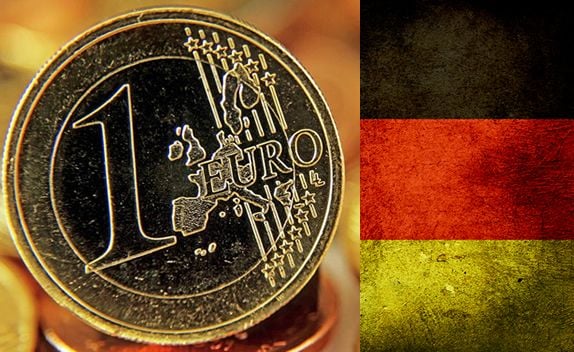The Euro to Dollar Rate Holds Above 1.12 Aided by Strong German ZEW Data
- Written by: Gary Howes
-
Life has finally been injected into the moribund EUR/USD exchange rate courtesy of some better-than-forecast confidence statistics out of Germany.
The Euro to Dollar exchange rate has jumped above the 1.12 threshold over the past 24 hours as the shared currency takes full advantage of the weakness in its wounded US counterpart.
The move higher is a continuation of the bull-run the pair has experienced since the July 25th lows of 1.0952.
While USD weakness could be argued to be the key driver to the move, there can be no denying that the gains have been aided in no small part by the better-than-forecast ZEW indicator surprise.
The ZEW Economic Sentiment index is a survey of around 350 leading German economists and is seen as a good indicator of direction in the Eurozone's largest economy.
Therefore, improved sentiment in the ZEW tends to precede improved economic output, which is naturally taken as a positive for the currency.
Last month, the July release uncovered the underlying difficulties of the Eurozone amidst the Brexit vote fall-out as the indicator collapsed to a 4-year low to -14.7.
It has however bounced back to 4.6 this month, markets had priced the Euro lower for a reading of -6.3, so we can see some nice upside being provided by the result.
The rebound signals that financial analysts are markedly less pessimistic about the prospects of the German economy over the next six months.
The ZEW institute has cited that “political risks within and outside the European Union continue to inhibit a more optimistic economic outlook for Germany” as the reason for the modest expectations index.
The biggest increase in sentiment on the outlook was reported for the automobile sector (+10 pts), which, after three months, returned to positive territory. The second largest increase was reported by steel and mechanical engineering companies, both increasing by 9.7 points.
The first reading of German Q2 16 real GDP growth last week surprised to the upside, rising 0.4% against consensus expectations of 0.2% q//q, which likely contributed to the optimism among financial markets experts.
“Today’s ZEW reading is consistent with our new baseline scenario of a slowdown in the German economy in the coming quarters, as uncertainty stemming from the UK’s Brexit vote will likely weigh on international trade and investment,” says Olga Tschekassin at Barclays.
Barclays believe that the economy will slow only slightly in Q3 and grow broadly at the same pace before the impact of the Brexit vote starts to show up in the data toward the end of the year, with their growth forecast now at 0.3% and 0.2% q/q in Q3 and Q4, respectively.
US Fed's Williams Keeps USD Under Pressure
The USD is on its back foot this morning, losing ground against all of its major emerging market and G10 counterparts.
This comes after San Francisco Fed President Williams becomes the latest among senior policymakers to urge a rethink of monetary policies as the major economies remain mired in sluggish growth and anaemic inflation.
There is simply not enough room for central banks to cut interest rates in response to an economic downturn when both natural rates and inflation are very low,” he said.
A higher inflation target would imply a higher average level of interest rates and thereby give monetary policy more room to respond to any future crisis.
Williams argued that the underlying drivers for these declines included ageing populations, slower trend productivity, emerging markets seeking large reserves of safe assets, and a broader worldwide glut of savings. “The key takeaway from these global trends is that interest rates are going to stay lower than we’ve come to expect in the past,” he argued.
And it is this lower-for-longer stance that will have turned the Dollar lower.
Only when talk of an imminent rate rise comes back onto the rader will the USD regain lost momentum.
Where Next for the Euro-Dollar?
Despite the strong rally in EUR/USD we note that there are potential limits to the advance.
Our studies indicate that the descending trend line on the charts towards 1.14 is a likely candidate for offering a strong supply of EUR to the market.
“We remain dubious that the ECB will manage to further weaken the single currency through its policy easing. Nonetheless, the Fed won’t raise rates this year in our view and this will help the EUR to depreciate slightly. We target EURUSD below 1.10 in the short-term,” says Yann Quelenn at Swissquote Bank.




